Thomas R. Groechel
Augmented Reality Appendages for Robots: Design Considerations and Recommendations for Maximizing Social and Functional Perception
May 13, 2022

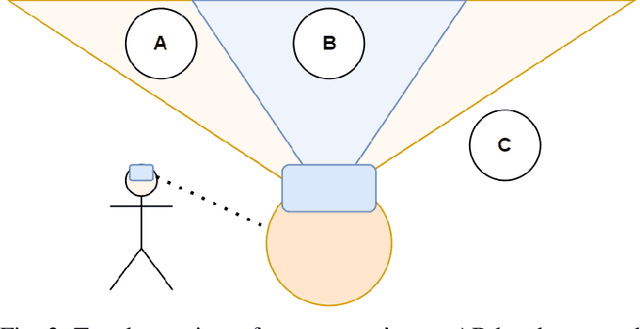

Abstract:In order to address the limitations of gestural capabilities in physical robots, researchers in Virtual, Augmented, Mixed Reality Human-Robot Interaction (VAM-HRI) have been using augmented-reality visualizations that increase robot expressivity and improve user perception (e.g., social presence). While a multitude of virtual robot deictic gestures (e.g., pointing to an object) have been implemented to improve interactions within VAM-HRI, such systems are often reported to have tradeoffs between functional and social user perceptions of robots, creating a need for a unified approach that considers both attributes. We performed a literature analysis that selected factors that were noted to significantly influence either user perception or task efficiency and propose a set of design considerations and recommendations that address those factors by combining anthropomorphic and non-anthropomorphic virtual gestures based on the motivation of the interaction, visibility of the target and robot, salience of the target, and distance between the target and robot. The proposed recommendations provide the VAM-HRI community with starting points for selecting appropriate gesture types for a multitude of interaction contexts.
What and How Are We Reporting in HRI? A Review and Recommendations for Reporting Recruitment, Compensation, and Gender
Jan 22, 2022



Abstract:Study reproducibility and generalizability of results to broadly inclusive populations is crucial in any research. Previous meta-analyses in HRI have focused on the consistency of reported information from papers in various categories. However, members of the HRI community have noted that much of the information needed for reproducible and generalizable studies is not found in published papers. We address this issue by surveying the reported study metadata over the past three years (2019 through 2021) of the main proceedings of the International Conference on Human-Robot Interaction (HRI) as well as alt.HRI. Based on the analysis results, we propose a set of recommendations for the HRI community that follow the longer-standing reporting guidelines from human-computer interaction (HCI), psychology, and other fields most related to HRI. Finally, we examine three key areas for user study reproducibility: recruitment details, participant compensation, and participant gender. We find a lack of reporting within each of these study metadata categories: of the 236 studies, 139 studies failed to report recruitment method, 118 studies failed to report compensation, and 62 studies failed to report gender data. This analysis therefore provides guidance about specific types of needed reporting improvements for HRI.
Long-Term, in-the-Wild Study of Feedback about Speech Intelligibility for K-12 Students Attending Class via a Telepresence Robot
Aug 24, 2021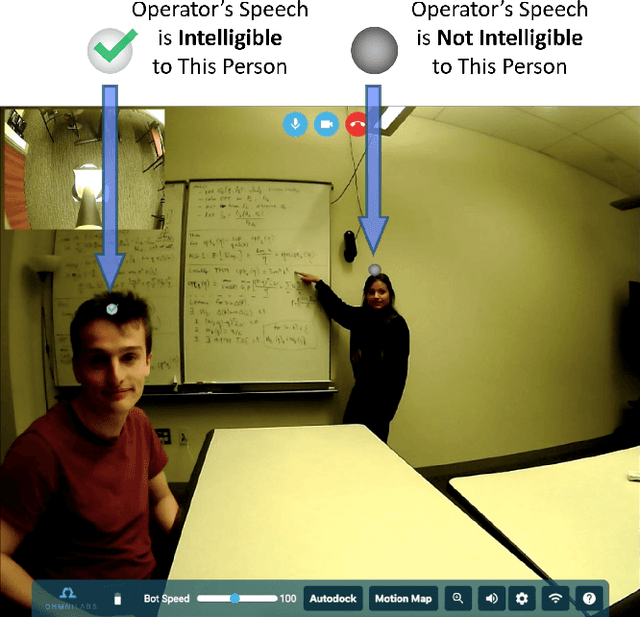

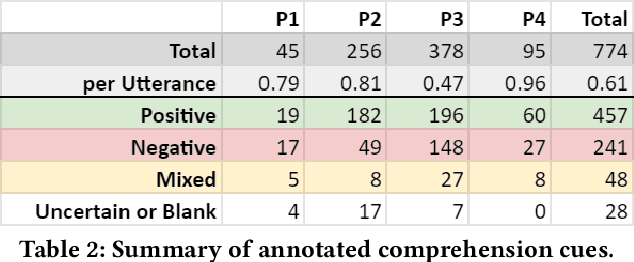
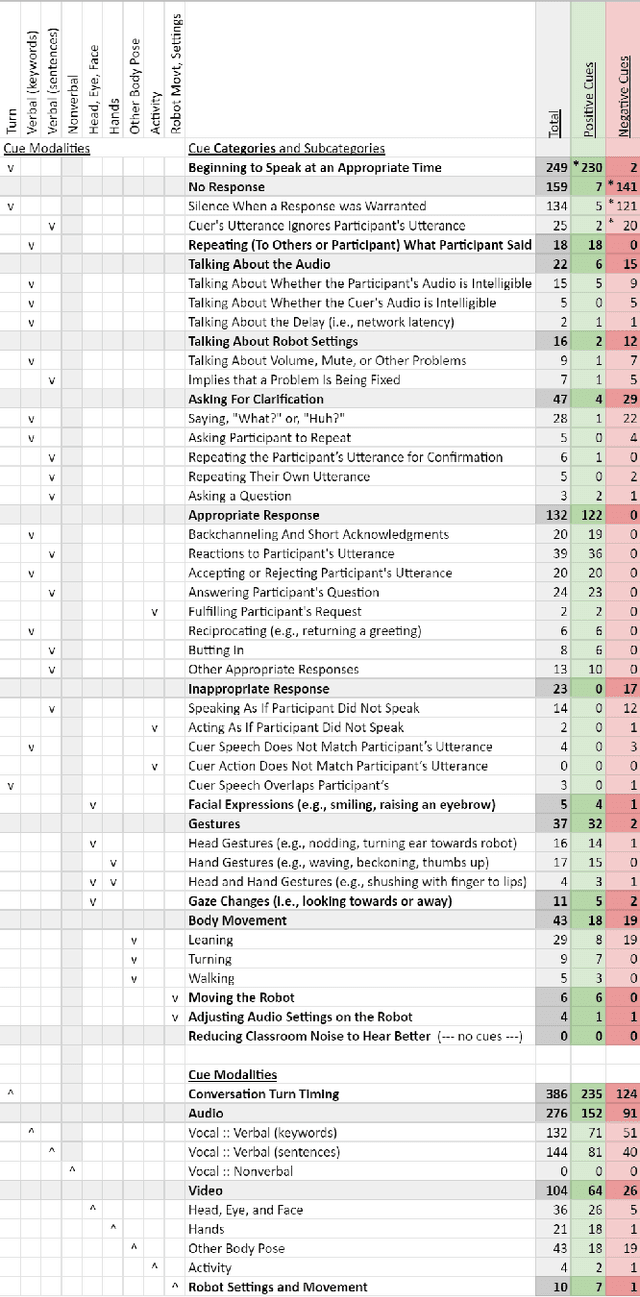
Abstract:Telepresence robots offer presence, embodiment, and mobility to remote users, making them promising options for homebound K-12 students. It is difficult, however, for robot operators to know how well they are being heard in remote and noisy classroom environments. One solution is to estimate the operator's speech intelligibility to their listeners in order to provide feedback about it to the operator. This work contributes the first evaluation of a speech intelligibility feedback system for homebound K-12 students attending class remotely. In our four long-term, in-the-wild deployments we found that students speak at different volumes instead of adjusting the robot's volume, and that detailed audio calibration and network latency feedback are needed. We also contribute the first findings about the types and frequencies of multimodal comprehension cues given to homebound students by listeners in the classroom. By annotating and categorizing over 700 cues, we found that the most common cue modalities were conversation turn timing and verbal content. Conversation turn timing cues occurred more frequently overall, whereas verbal content cues contained more information and might be the most frequent modality for negative cues. Our work provides recommendations for telepresence systems that could intervene to ensure that remote users are being heard.
TOKCS: Tool for Organizing Key Characteristics of VAM-HRI Systems
Aug 07, 2021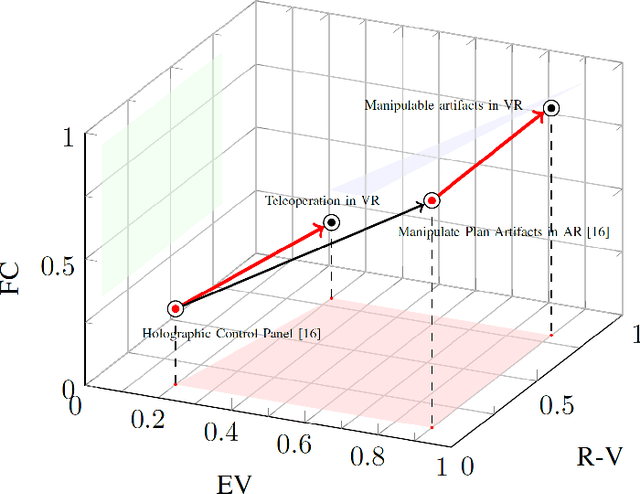

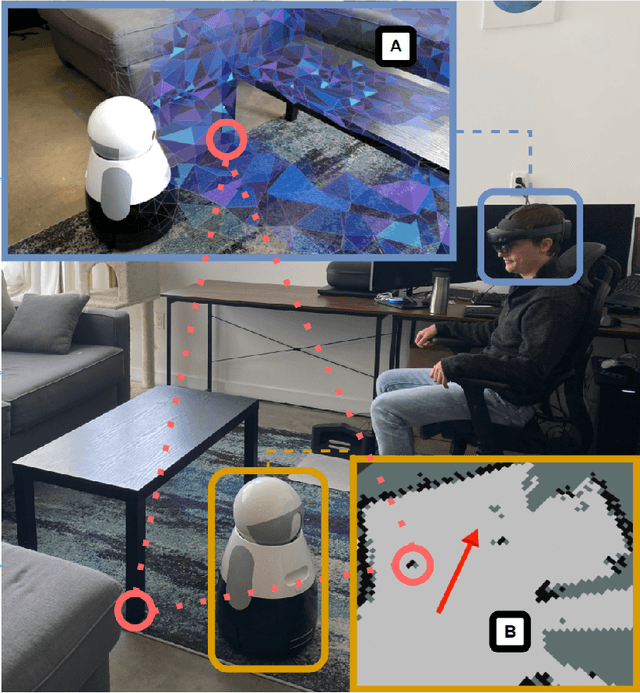

Abstract:Frameworks have begun to emerge to categorize Virtual, Augmented, and Mixed Reality (VAM) technologies that provide immersive, intuitive interfaces to facilitate Human-Robot Interaction. These frameworks, however, fail to capture key characteristics of the growing subfield of VAM-HRI and can be difficult to consistently apply. This work builds upon these prior frameworks through the creation of a Tool for Organizing Key Characteristics of VAM-HRI Systems (TOKCS). TOKCS discretizes the continuous scales used within prior works for more consistent classification and adds additional characteristics related to a robot's internal model, anchor locations, manipulability, and the system's software and hardware. To showcase the tool's capability, TOKCS is applied to find trends and takeaways from the fourth VAM-HRI workshop. These trends highlight the expressive capability of TOKCS while also helping frame newer trends and future work recommendations for VAM-HRI research.
Using Socially Expressive Mixed Reality Arms for Enhancing Low-Expressivity Robots
Nov 30, 2019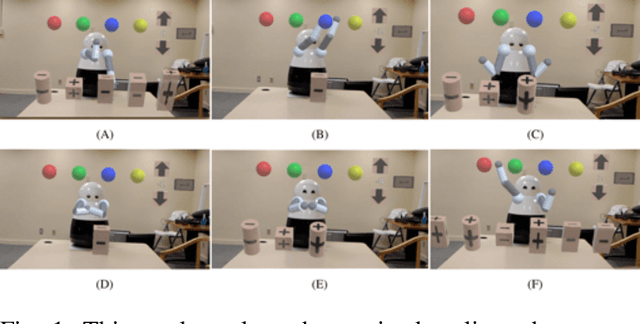
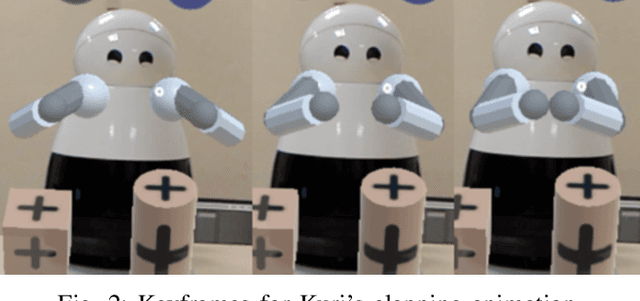

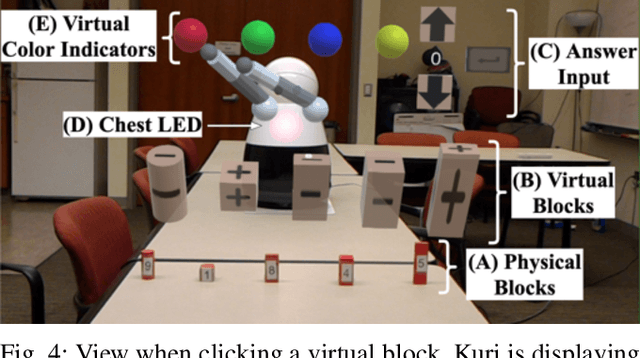
Abstract:Expressivity--the use of multiple modalities to convey internal state and intent of a robot--is critical for interaction. Yet, due to cost, safety, and other constraints, many robots lack high degrees of physical expressivity. This paper explores using mixed reality to enhance a robot with limited expressivity by adding virtual arms that extend the robot's expressiveness. The arms, capable of a range of non-physically-constrained gestures, were evaluated in a between-subject study ($n=34$) where participants engaged in a mixed reality mathematics task with a socially assistive robot. The study results indicate that the virtual arms added a higher degree of perceived emotion, helpfulness, and physical presence to the robot. Users who reported a higher perceived physical presence also found the robot to have a higher degree of social presence, ease of use, usefulness, and had a positive attitude toward using the robot with mixed reality. The results also demonstrate the users' ability to distinguish the virtual gestures' valence and intent.
 Add to Chrome
Add to Chrome Add to Firefox
Add to Firefox Add to Edge
Add to Edge